29 Hearty Classic European Sausage Dishes to Delight Your Palate
European sausage dishes represent a rich culinary tradition deeply rooted in cultural heritage and regional cooking techniques.
Meat preservation became an essential skill for communities facing harsh winters and limited food storage options.
Skilled artisans developed intricate recipes passed down through generations, transforming simple ingredients into complex flavor profiles.
Ancient techniques combined seasoning, smoking, and curing methods that transformed basic meat into sophisticated gastronomic experiences.
Each region crafted unique sausage variations reflecting local agricultural practices, available spices, and traditional flavor preferences.
Passionate cooks understood that sausage-making was more than food preparation - it was an art form connecting family histories and cultural identities.
Meat processing techniques evolved from survival strategies to celebrated culinary expressions that continue to delight food enthusiasts worldwide.
Below are 29 classic European sausage dishes that showcase remarkable culinary creativity:
Classic European Sausage Dishes That Satisfy
Sausages in Europe are a delicious link to local tradition. Whether served with mustard and bread or simmered in stew, every recipe tells a story of place and people.
Spetsofai
Spetsofai is a hearty Greek sausage and pepper stew originating from Thessaly, featuring robust loukaniko sausages simmered in a spicy tomato sauce with chunky bell peppers.
Mountainous Central Greece embraces this warming winter dish as a staple in local taverns.
Hot peppers add a distinctive kick that elevates the flavor profile.
Rural Greek regions developed this simple yet satisfying meal as a way to use fresh seasonal ingredients.
Farmers and shepherds traditionally prepared spetsofai with ingredients readily available in their kitchens.
Greeks serve the stew as both a meze appetizer and a filling main course.
Traditional accompaniments include crusty bread, rice, potatoes, or crumbled feta cheese.
Each bite delivers a rustic blend of smoky sausage, tangy tomatoes, and vibrant peppers that reflects the region's culinary heritage.
Sheftalia
Sheftalia are iconic Cypriot grilled sausages packed with rich flavors from minced pork and lamb, wrapped in delicate caul fat that melts during cooking.
Cyprus locals traditionally prepare these sausages by mixing meat with chopped red onions and fresh parsley, seasoning the blend with salt, pepper, and cinnamon.
Originating from disputed roots, the name might derive from the Turkish word "seftali" meaning peach or honor a mysterious street vendor's creation.
Small sausages are carefully skewered and grilled over open flames, allowing the caul fat to render and create a crispy, caramelized exterior.
Each sausage develops a golden-brown crust while maintaining a juicy, tender interior that bursts with Mediterranean spices.
Street vendors and home cooks across Cyprus consider sheftalia a staple grilled meat dish, often served with warm pita bread.
Regional variations exist, but the basic preparation remains consistent across different Cypriot communities.
Ovos Mexidos Com Farinheira
Ovos mexidos com farinheira are Portuguese scrambled eggs elevated by the unique, smoky flavor of farinheira, a traditional sausage crafted from flour, pork fat, and regional spices.
Crumbled farinheira sizzles in a hot pan, releasing intense aromas and rich oils before beaten eggs merge into the mix.
Soft scrambled eggs absorb the sausage's deep, complex taste, creating a robust breakfast or light meal.
Rustic and satisfying, this dish reflects Portugal's culinary heritage of transforming simple ingredients into memorable cuisine.
Cooks carefully balance the sausage's saltiness with creamy egg texture, ensuring each bite delivers maximum flavor.
Regional variations might include additional herbs or garnishes like parsley.
Crusty bread provides the perfect accompaniment, helping soak up the flavorful egg mixture.
Restaurants and home kitchens across Portugal celebrate this classic comfort food with pride.
Currywurst
Currywurst dominates German street food as a beloved sausage dish combining sliced bratwurst smothered in spicy curry-tomato sauce.
German food culture celebrates this quick snack that originated in Berlin after World War II when innovative food vendors created affordable meals.
Hawker Herta Heuwer first developed the recipe in 1949 using imported British curry powder and ketchup.
Vendors typically slice grilled or fried sausages and generously coat them with a smooth, tangy sauce dusted with yellow curry powder.
Restaurants and street stalls across Germany serve currywurst with crispy french fries or kaiser rolls as a popular casual meal.
Regional variations include different sausage types and sauce preparations, reflecting local tastes.
Modern currywurst has become a national comfort food symbol of German urban dining.
Germans consume approximately 800 million currywurst portions annually, making it a significant street food phenomenon.
Rougail Saucisses
Rougail saucisses are spicy sausage stew native to Reunion Island, blending French and Creole culinary traditions with robust flavors and simple ingredients.
Smoked or fresh sausages form the heart of this hearty dish, quickly blanched and sauteed in olive oil until golden brown.
Sliced onions caramelize alongside the meat, creating a rich base for the stew.
Hot peppers crushed with salt add intense heat and depth to the mixture.
Diced tomatoes simmer into the sauce, thickening and intensifying the overall flavor profile.
Mediterranean and African spice influences shine through each carefully prepared component.
Salt and olive oil enhance the natural richness of the ingredients.
Served with white rice, this one-pot meal represents Reunion's complex culinary heritage.
Toad In The Hole
Toad in the hole represents a classic British comfort dish featuring sausages nestled inside a crispy golden Yorkshire pudding batter.
British families originated this hearty meal during the 18th century as an economical way to stretch meat portions with affordable flour and eggs.
Sausages peek through the puffy batter like toads hiding in a hole, giving the dish its quirky name.
Working-class households embraced this simple yet satisfying meal as a budget-friendly dinner option.
Traditionally served with caramelized onion gravy, mashed potatoes, and seasonal vegetables, the dish offers a warming and filling experience.
Cooks typically use high-quality pork sausages for maximum flavor and texture.
Regional variations exist across England, with some families adding extra herbs or using different meat types.
Toad in the hole remains a beloved staple in British home cooking, connecting generations through its comforting flavors.
Galette-Saucisse
Galette saucisse embodies Brittany's street food culture, featuring a rustic buckwheat crepe wrapped around a grilled pork sausage.
French street vendors have served this hearty snack since the 15th century, originally crafted with pork offal.
Regional food trucks and markets showcase the simple yet satisfying combination of crisp, savory sausage nestled in a sturdy buckwheat crepe.
Mustard traditionally accompanies the dish, though some vendors offer additional condiments like mayonnaise or ketchup.
Grilling techniques enhance the sausage's smoky flavor, creating a perfect handheld meal.
Brittany's culinary heritage shines through this unpretentious street food staple.
Historical records suggest the dish evolved from peasant cooking practices, transforming humble ingredients into a beloved regional specialty.
Pigs In Blankets
Pigs in blankets are bite-sized British sausage treats wrapped in crispy bacon, creating a savory and irresistible finger food that originated in the UK during the late 1950s.
Chipolata sausages form the core of this classic dish, nestled snugly inside streaky bacon strips.
Delia Smith popularized the recipe in the 1990s, transforming it into a Christmas dinner staple alongside roast turkey.
Small and compact, these sausages can be pan-fried or baked to golden perfection.
UK and Irish households consider them a must-have holiday side dish.
Nicknamed "kilted soldiers," these mini meat parcels pack intense flavor in every bite.
Home cooks and restaurant chefs alike embrace this simple yet delicious recipe.
British culinary tradition shines through these easy-to-prepare bacon-wrapped sausages.
Chorizo Al Vino
Chorizo al vino electrifies Spanish bar cuisine through its bold wine-braised sausage preparation, transforming traditional chorizo into a succulent appetizer bursting with intense flavor.
Spanish red wine infuses rich depth into spicy pork sausage pieces simmered with aromatic garlic and fragrant bay leaves.
Bars throughout Spain serve this classic tapa alongside crusty bread, allowing diners to soak up every drop of the savory cooking liquid.
Freshly chopped parsley adds a bright, herbaceous garnish that cuts through the dish's deep, meaty richness.
Small ceramic dishes typically showcase the glistening sausage pieces swimming in their wine-based sauce.
Simple ingredients create maximum impact in this beloved Spanish bar snack.
Generous portions encourage social sharing among friends.
Each bite promises a complex blend of smoky, spicy, and wine-soaked flavors that define Spanish tapas culture.
Bangers And Mash
Bangers and mash are a classic British comfort dish featuring sausages nestled on creamy mashed potatoes and drizzled with rich onion gravy.
British pub culture embraced this hearty meal after World War I, when sausages gained their nickname from their tendency to burst loudly while cooking.
Butchers traditionally craft these sausages using natural casings and a precise blend of pork and fat to seal in maximum flavor.
Meat selection typically includes pork or beef, with quality sausages ensuring a juicy, satisfying bite.
Golden brown onion sauce adds a bittersweet complexity to the plate.
Generous portions of smooth, buttery mashed potatoes create a perfect base for the savory sausages.
Regional variations exist across different parts of England, each adding subtle twists to the classic recipe.
Restaurant and home cooks alike continue to celebrate this straightforward, warming dish as a staple of British cuisine.
Saucisson Brioche
Saucisson brioche embodies Lyon's rich culinary tradition, featuring a robust pistachio-crusted sausage nestled within a dense, less sweet bread loaf.
French artisans carefully select premium meats and craft the sausage with regional spices and techniques passed through generations.
Bakers prepare a hearty brioche dough that differs from traditional breakfast versions by using fewer eggs and less sugar.
Regional butchers typically create the sausage with high-quality pork and distinctive seasoning blend.
Pistachios add a distinctive nutty crust that enhances the meat's robust flavor profile.
French families often serve this substantial dish as a midday meal or hearty lunch option.
Regional bakeries and charcuteries in Lyon specialize in preparing this unique bread-and-sausage combination.
Small towns surrounding Lyon continue celebrating this classic dish as a symbol of local gastronomic heritage.
Battered Sausages
Battered sausage represents a classic deep-fried comfort food originating from British pub and chip shop cuisine.
British kitchens transform ordinary sausages by coating them in thick flour-based batter and submerging them in scalding oil until golden brown and crispy.
Diners enjoy this hearty snack with french fries or alongside traditional fish and chips in pubs across the United Kingdom.
Regional variations include different sausage types and batter recipes depending on local preferences.
Street vendors and casual restaurants frequently serve this portable meal as a quick lunch or evening snack.
Batter creates a crunchy exterior that seals in the sausage's juicy interior, making each bite satisfyingly crisp.
Many regions in the UK, Ireland, New Zealand, and Australia have embraced this simple yet delicious fried dish.
Salt and vinegar often complement the crispy battered sausage, enhancing its robust flavor profile.
Boudin Noir Aux Pommes
Boudin noir aux pommes are a savory French delicacy featuring rich blood sausage complemented by tart apples, creating a bold culinary experience that balances intense meat flavors with sharp fruit notes.
French cuisine celebrates this traditional dish's complex taste profile, where dark sausage meets caramelized apple slices in a perfect harmony of contrasting ingredients.
Originating in rural regions, this specialty showcases France's expertise in transforming simple components into sophisticated meals.
Regional variations exist across different French provinces, each adding unique preparation techniques.
Blood sausage, crafted from pork blood and fat, provides a deep, earthy flavor profile.
Apples are typically sliced and quickly sautéed to enhance their natural sweetness.
Skilled butchers carefully prepare the sausage using time-honored methods.
Restaurants and home kitchens alike feature this classic dish as a hearty starter or main course.
Gruenkohl Und Pinkel
Gruenkohl und Pinkel represents a hearty winter staple from Northern Germany where kale and smoky sausages create a warming comfort meal packed with regional flavor.
Finely chopped kale gets slowly cooked with lard and onions until tender and rich with savory depth.
Pinkel sausages, crafted from ground pork and grits, provide a traditional protein complement to the green vegetable base.
German families traditionally enjoy this dish during cold winter months as a satisfying communal meal.
Home cooks often serve gruenkohl alongside boiled or crispy fried potatoes for extra substance.
Regional variations might include adding bacon or smoked ham for additional flavor complexity.
Northern German restaurants frequently feature this classic winter dish on seasonal menus.
Winter celebrations and gatherings often highlight gruenkohl und pinkel as a central meal that connects generations through shared culinary tradition.
Utopenci
Utopenci are Czech pickled sausages soaked in a spicy vinegar marinade that packs intense flavor and tangy richness.
Czech pub-goers relish these cold snacks served alongside crisp white bread and beer.
Small pieces of bay leaves, black pepper, and chopped onions enhance the sausage's robust taste.
Folklore suggests the dish's name originates from a miller who supposedly drowned while creating the recipe.
Spicy vinegar transforms ordinary sausages into a zesty treat beloved in Czech drinking establishments.
Marinating techniques ensure each sausage absorbs maximum seasoning and develops complex flavor profiles.
Regional variations exist across different Czech regions and local pubs.
Salt, vinegar, and specific spice combinations make utopenci a unique beer accompaniment.
Saure Zipfel
Saure zipfel are zesty Franconian winter sausages simmered in a sharp vinegar broth that transforms bratwurst into a tangy regional delicacy.
German cooks steep quality bratwurst with onions, carrots, and a complex spice blend including juniper berries, pepper, mustard seeds, and bay leaves.
White wine adds depth to the briny liquid, creating an intensely flavorful base that softens and seasons the meat.
Salt and a touch of sugar balance the vinegar's acidity, preventing overwhelming sourness.
Simmering ensures tender, well-infused sausages that absorb the broth's robust flavors.
Its name translates to "sour ends," highlighting the dish's signature acidic profile.
Warm brown bread or fresh pretzel buns serve as perfect accompaniments for soaking up the aromatic broth.
Germans traditionally enjoy saure zipfel as a comforting winter meal that warms both body and spirit.
Hot Dog Sauce (Nakkikastike)
Nakkikastike is a beloved Finnish comfort food featuring sautéed nakki sausages simmered in a rich, hearty brown sauce that captures the essence of home-cooked simplicity.
Finnish families traditionally prepare this dish with mild nakki sausages, similar to frankfurters, creating a satisfying meal with deep culinary roots.
Tomato paste adds robust flavor to the sauce, transforming the simple ingredients into a memorable dining experience.
Onions, carrots, and cream contribute to the sauce's complex taste profile, enhancing its overall depth.
Herbs and spices can be added for extra complexity, allowing personal creativity in preparation.
Mashed or boiled potatoes serve as the classic side dish, though fresh vegetables and pasta also complement the sausage sauce perfectly.
Home cooks often customize the recipe based on family preferences and available ingredients.
Wurstsalat
Wurstsalat represents a classic German cold sausage salad originating in southern Germany, Switzerland, Austria, and Alsace, featuring thinly sliced cooked sausage as its star ingredient.
Germans typically prepare this refreshing dish using Lyoner, fleischwurst, or stadtwurst sausages, which resemble bologna in texture and flavor.
Regional variations include Swiss versions with cervelat sausage and additional ingredients like tangy pickles and sharp Emmental cheese.
Bavarian and Swabian interpretations often incorporate extra vegetables such as crisp radishes, soft boiled eggs, juicy tomatoes, or colorful bell peppers.
Beer gardens and traditional inns frequently serve wurstsalat during warm summer months as a light, satisfying meal.
Many Germans enjoy this protein-packed salad as a quick lunch or casual dinner option.
European sausage lovers appreciate its simplicity and versatile nature.
The dish highlights regional culinary traditions through its straightforward yet flavorful composition.
Bratwurst In Biersoe
Bratwurst in Biersoe embodies German culinary creativity by transforming simple ingredients into a rich, complex meal through strategic beer and cookie sauce techniques.
East German kitchens developed this unique dish featuring bratwurst simmered in dark beer with spiced cookie crumbs that naturally thicken the sauce.
Traditional preparation involves browning sausages in oil until golden, then deglazing the pan with robust beer.
Crumbled cookies slowly dissolve, creating a thick, flavorful gravy with subtle sweetness.
Salt, sugar, and pepper enhance the sauce's depth and complexity.
Careful simmering ensures complete cookie integration and sauce consistency.
German regional cooking showcases its innovative spirit through this unexpected flavor combination.
Home cooks and restaurant chefs alike celebrate this inventive method of elevating simple bratwurst into a memorable meal.
Brovada E Muset
Brovada e muset represents a rustic culinary treasure from Friuli-Venezia-Giulia, blending fermented white turnips with a hearty pork sausage.
Peasant farmers traditionally crafted this robust dish using red grape marc to preserve and flavor sliced turnips called brovada.
Regional butchers prepare musetormusetto as a thick, large pork sausage similar to cotechino, rich with traditional meat cuts.
Winter months typically showcase this warming combination, which balances tangy fermented vegetables with succulent meat.
Families gather around tables to enjoy this substantial meal that reflects generations of agricultural wisdom.
Mountain communities especially value this dish for its nutritious ingredients and deep cultural roots.
Regional restaurants frequently feature brovada e muset as a classic representation of local cuisine.
Seasonal ingredients and traditional preparation methods ensure each serving connects diners with Friuli-Venezia-Giulia's gastronomic heritage.
White Sausage With Apples (Boudin Blanc Aux Pommes)
Boudin blanc aux pommes represents a classic French sausage dish highlighting delicate white sausage paired with sweet apples in a rustic preparation.
French culinary traditions emphasize the careful balance between savory boudin blanc and caramelized apple slices.
Sarthe region cuisine celebrates this combination through precise cooking techniques that transform simple ingredients into an elegant meal.
Butter and cider vinegar create a rich sauce that enhances the sausage's subtle flavor profile.
Cooks carefully slice the sausage and prepare apples by peeling, coring, and quartering them before cooking.
Regional preparation methods ensure each ingredient maintains its distinct taste while complementing the overall dish.
Traditional serving practices involve pan-frying the sausage until golden brown and caramelizing apple segments alongside it.
Seasonal apples from local orchards provide natural sweetness that perfectly balances the mild meat.
Plato De Los Montes De Malaga
Plato de los montes de Malaga represents a hearty mountain cuisine staple featuring a robust combination of fried eggs, potatoes, and regional sausages like morcilla and chorizo.
Mountain restaurants in Malaga serve this traditional plate as a filling winter weekend meal packed with intense flavors and local ingredients.
Roasted green peppers add depth to the dish while manteca colora (a spiced lard mixture) provides rich, distinctive seasoning.
Paprika and carefully selected spices contribute additional layers of complexity to the plate.
Locals enjoy this substantial meal as an affordable menu option best accompanied by a cold beer.
Each ingredient reflects the rustic cooking style of southern Spanish mountain communities.
Regional restaurants pride themselves on preparing this classic dish with authentic techniques passed through generations.
Blunzengrostl
Blunzengrostl stands as a robust Austrian and Bavarian comfort food featuring fried blood sausage with caramelized onions and crispy potatoes.
Rural farmhouse kitchens originated this hearty skillet meal as a practical way to use leftover meat and vegetables.
German-speaking regions traditionally prepare Blunzengrostl with high-quality blood sausage sliced and pan-fried until golden brown.
Mountain regions and countryside communities especially enjoy this protein-rich dish during cold winter months.
Farmers and laborers historically relied on Blunzengrostl as a filling meal providing substantial energy for physical work.
Salt, pepper, and sometimes marjoram season the ingredients to enhance natural flavors.
Regional variations might include adding bacon or serving with a side of fresh bread or pickles.
Austrian and Bavarian households continue to celebrate this simple yet satisfying one-pan recipe as a connection to their agricultural heritage.
Paipet Fier
Paipet fier represents a rustic French culinary treasure from Doubs, featuring Montbeliard sausages and potatoes as its star ingredients.
Mountainous regions of France cherish this hearty peasant dish for its simple yet robust flavors.
Smoky pork sausages form the protein base, complemented by tender sliced potatoes.
Olive oil and flour create a creamy sauce that binds the ingredients together with vinegar and sausage cooking liquid.
Seasonings enhance the dish's earthy character, providing depth and warmth.
Rural communities traditionally prepare this comfort food during cold winter months.
Cotechino In Galera
Cotechino in galera is a unique Modenese specialty featuring pork sausage wrapped inside beef and elegantly transformed through a complex wine-based marination process.
Regional chefs in Emilia-Romagna carefully spread sausage meat over beef slices, rolling and tying them with pancetta before immersing in a rich Sangiovese wine marinade with aromatic vegetables.
Bay leaves, carrots, onions, and celery infuse deep flavors into the meat during slow simmering.
Butter and beef broth enhance the dish's robust profile while tomatoes add subtle acidity.
Traditional preparation involves carefully rolling and binding the meat to create a compact, flavorful bundle.
Sophisticated marinading techniques ensure tender, intensely seasoned results.
Each bite promises a complex blend of pork and beef textures with wine-infused undertones.
Salsiccia Arrosto
Sardinian salsiccia arrosto crowns Sardinia's meat-based cuisine with its distinctive circular wheel-shaped sausage crafted from high-quality pork seasoned with wild fennel and regional spices.
Regional chefs carefully roll the sausage into a signature 20 cm diameter shape secured by long skewers, allowing precise cooking control.
Cooks prick the sausage before roasting to release excess fat and ensure balanced texture.
Bay leaves and myrtle herbs infuse deep aromatic layers during slow roasting.
Traditional preparation involves carefully turning the sausage multiple times to achieve a perfect golden-brown exterior.
Sardinian families typically serve the sliced roasted sausage as a hearty second course during special gatherings.
Mountain regions particularly prize this dish for its rich flavor profile and connection to pastoral traditions.
Regional butchers select premium pork cuts to guarantee exceptional taste and quality.
Saucisses Aux Lentilles
Saucisses aux lentilles are a robust French comfort meal featuring savory sausages nestled atop protein-rich lentils simmered with smoky bacon, aromatic herbs, and root vegetables.
French families have enjoyed this hearty countryside staple for generations, typically preparing Toulouse sausages as the centerpiece of the dish.
Home cooks carefully simmer green lentils in rich chicken or vegetable broth, adding layers of flavor through bacon, onions, carrots, garlic, bay leaves, and thyme.
Traditional preparation involves cooking ingredients slowly to develop deep, complex tastes that highlight each component's natural essence.
Salt and pepper season the dish, balancing the meaty sausage with earthy lentil undertones.
Mediterranean culinary traditions heavily influence this rustic meal, which offers substantial nutrition and warmth during colder months.
Regional variations exist across France, with some families adding additional herbs or different sausage types.
Tiroler Wurstsalat
Tiroler wurstsalat is a hearty Austrian alpine sausage salad originating from the Tyrol region, featuring thin slices of traditional sausage mixed with sharp grey cheese and crisp onions.
Regional variations showcase the dish's flexibility with different sausage and cheese types.
Mountain communities developed this protein-rich salad as a quick, satisfying meal for farmers and workers.
Vinegar and oil create a tangy dressing that cuts through the meat's richness.
Ingredients like pickles or fresh herbs sometimes enhance the flavor profile.
Restaurants and home kitchens serve this dish as a standalone lunch or beer garden appetizer.
Germans and Austrians consider the salad a classic cold dish perfect for summer gatherings.
Cold beer often accompanies this robust alpine specialty.
Diots Au Vin Blanc
Diots au vin blanc are savory Savoyard sausages simmered in white wine, embodying Alpine culinary tradition with rich pork flavors and rustic preparation.
Mountain regions of France developed this hearty specialty using local ingredients like pork sausages and regional white wine.
Cooks carefully slice onions and brown them in a blend of peanut oil and butter, creating a golden base for the dish.
Flour helps thicken the sauce, adding depth to the wine-infused preparation.
Sausages slowly simmer in the fragrant liquid, absorbing complex wine flavors and becoming tender.
Traditional preparation involves gentle cooking that allows ingredients to meld seamlessly.
Haute-Savoie cuisine celebrates this simple yet flavorful method of transforming basic ingredients into a memorable meal.
Regional white wines contribute distinctive character, enhancing the sausages' natural richness.
What Cooking Techniques Are Used for Traditional Sausage Dishes in Europe?
Traditional European sausage dishes showcase a variety of cooking methods that highlight regional flavors and textures:
What Are the Most Traditional Sausage Pairings in Europe?
Sausages in Europe are often enjoyed alongside classic sides and condiments that complement their flavors:
These traditional pairings enhance the hearty, savory qualities of European sausages.


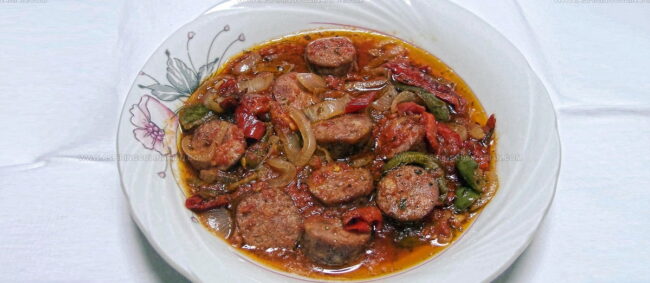



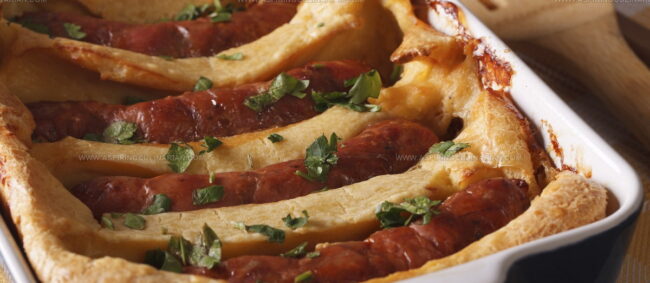


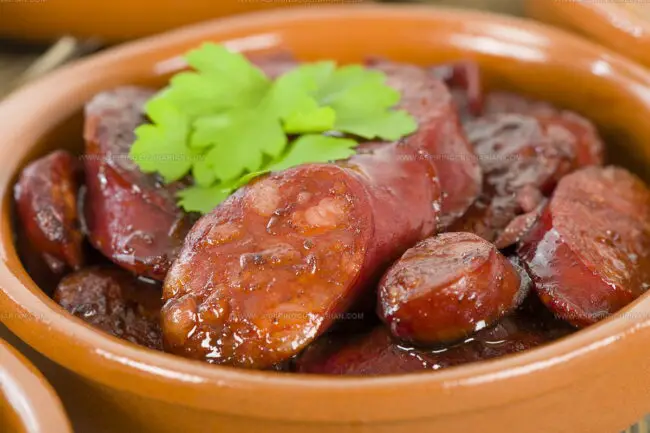
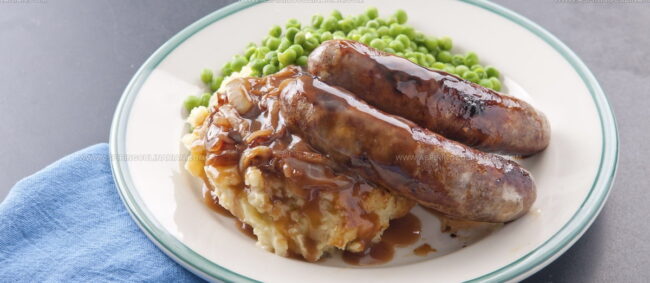
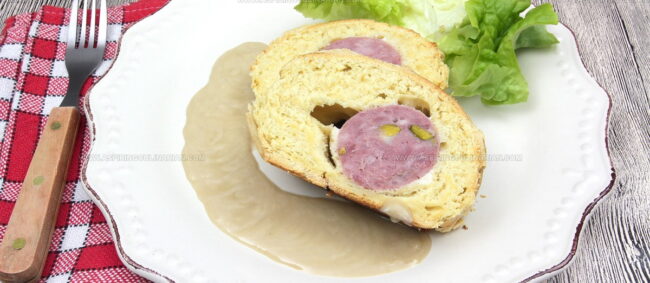

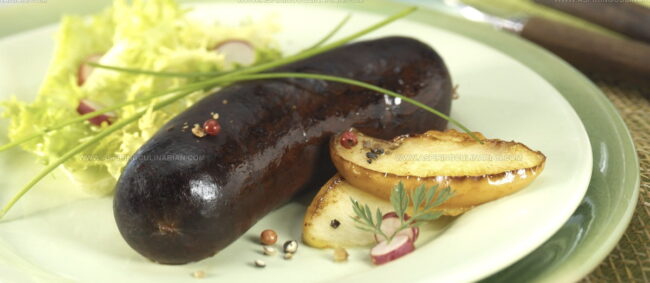
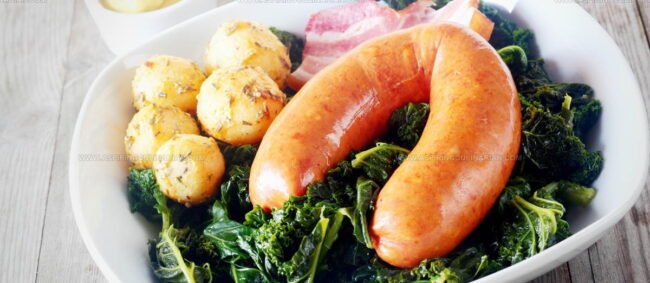
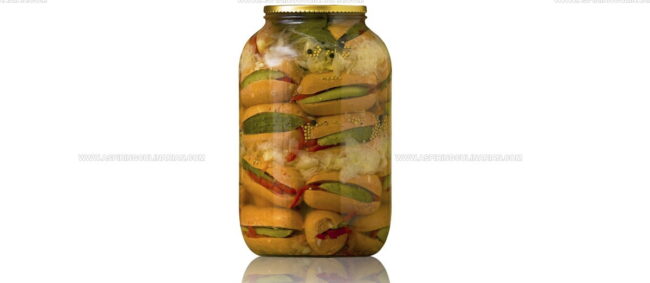
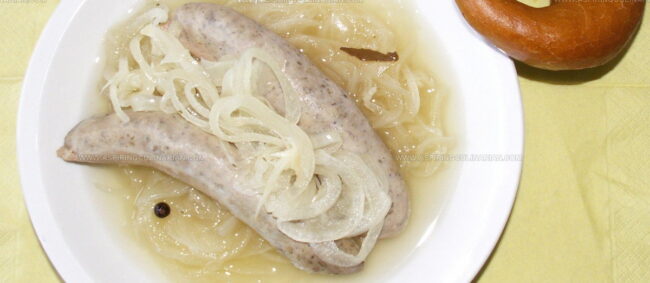
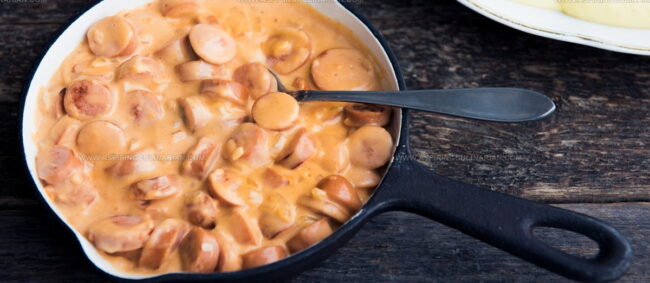
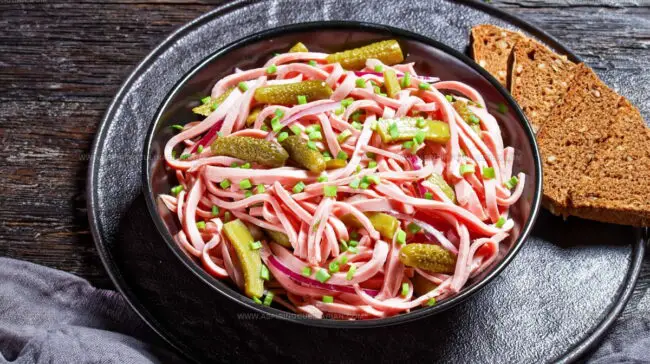
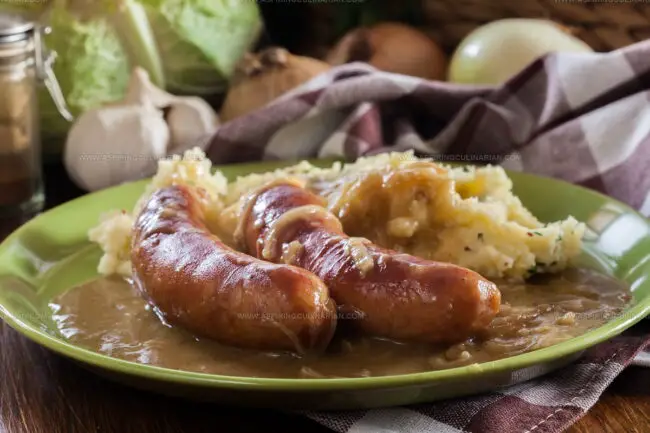
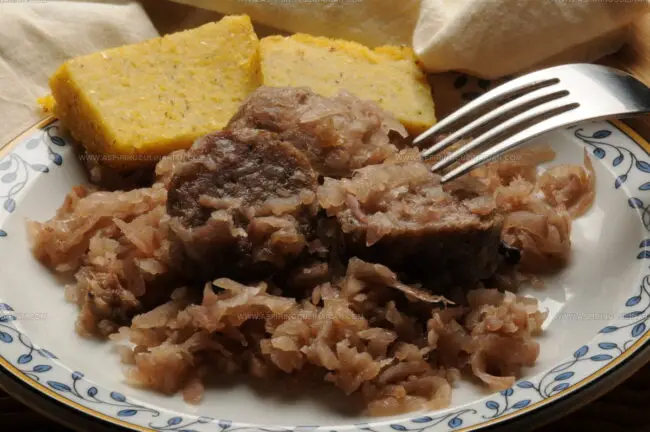

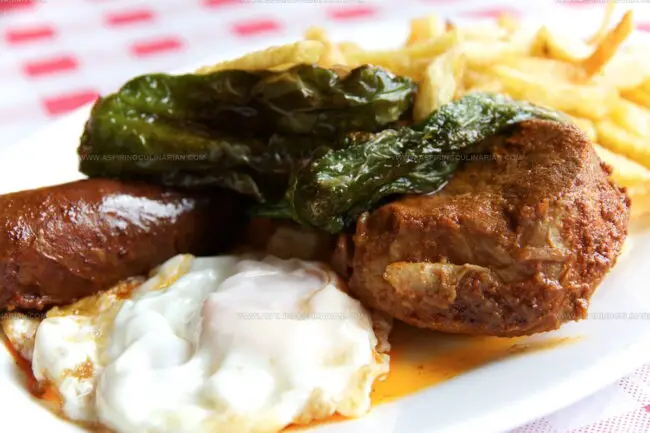
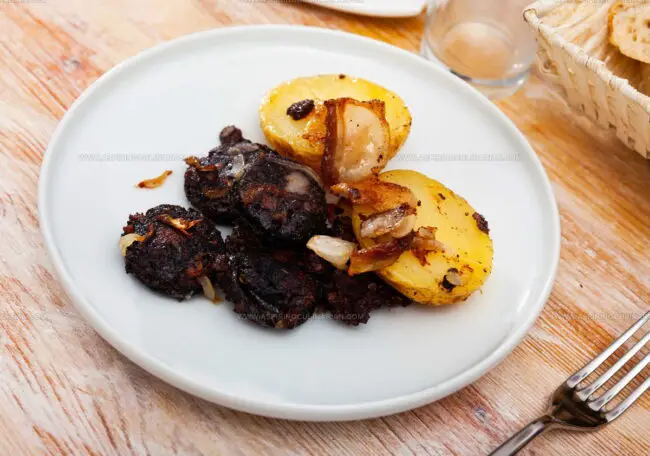
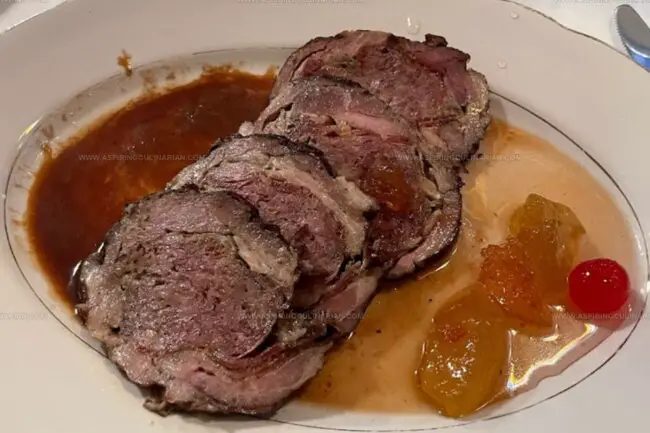
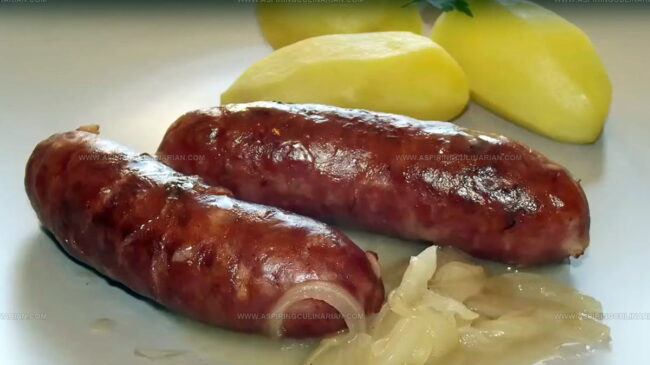
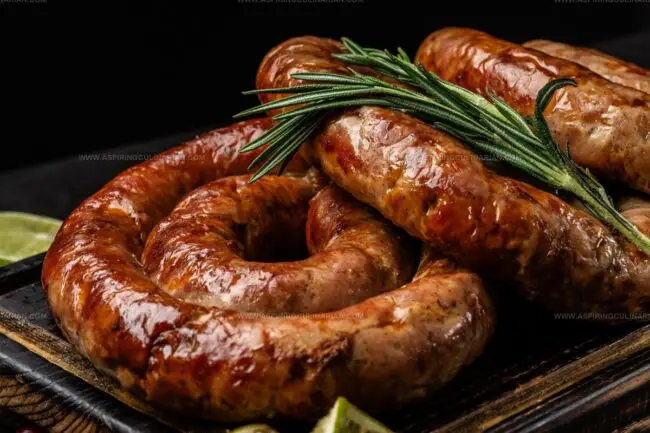
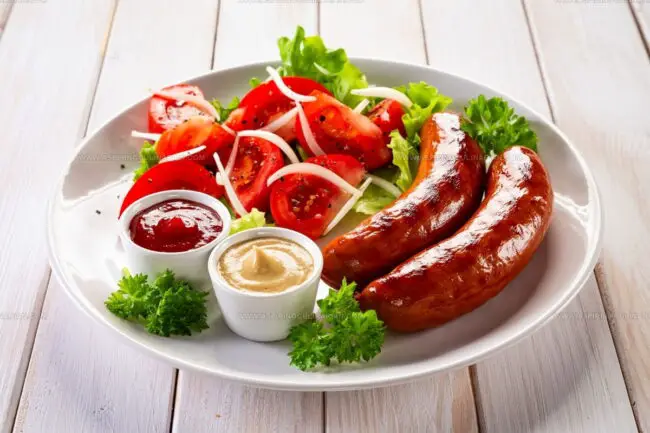
Lena Martinez
Contributing Writer & Culinary Educator
Expertise
Southwestern and Latin American cuisines, Vegetarian and plant-based recipe development, Culinary education and community outreach
Education
Santa Fe Community College, Santa Fe, NM
Certificate in Culinary Arts
Emphasized Southwestern cuisine and sustainable cooking practices
Lena grew up surrounded by the colors, spices, and traditions of the Southwest – flavors that sparked her love for bold, honest cooking. After earning her Culinary Arts certificate at Santa Fe Community College, she made it her mission to teach home cooks how to create flavorful, plant-powered meals without the fuss.
Her recipes are packed with vibrant ingredients, simple steps, and the kind of heart that turns a regular meal into something you’ll want to share. Outside the kitchen, Lena spends her time wandering farmers’ markets, trading family recipes, and helping young chefs find their voice through food.